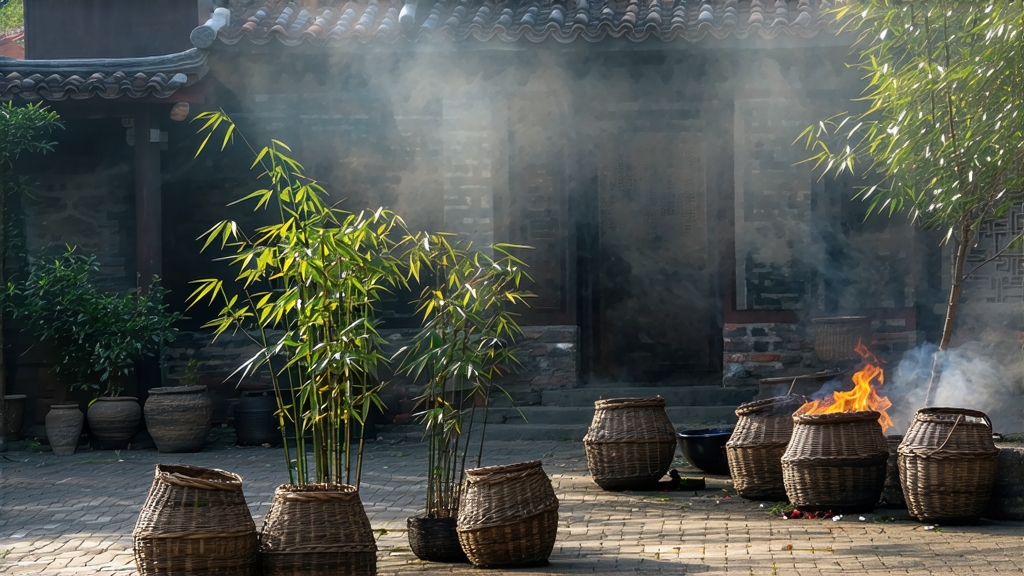
Tucked high in the mist-veiled Dabie Mountains of western Anhui Province, Huoshan Huangya has quietly embodied the elegance of China’s rarest tea category for more than fourteen centuries. While green tea commands global fame and pu-erh enjoys cult status, yellow tea remains a whispered legend even inside China; within that whisper, Huoshan Huangya is the clearest, most melodious note. To understand it is to step into a pocket of dynastic memory where emperors once sent horseback couriers racing across the empire for a single bamboo tube of its honeyed leaves, and where today a handful of families still wake before 3 a.m. to repeat a choreography of heat, moisture and patience that has no mechanical shortcut.
Historical scrolls first record the tea in 641 CE when Tang-dynasty monks offered “yellow sprouts from Huoshan” to Emperor Taizong. The name Huangya—literally “yellow sprout”—refers to the pale golden color the buds acquire after the secretive “sealing yellow” (menhuang) process. By the Ming dynasty the tea had become an imperial tribute item, and Qing archives list it among the “Eight Famous Teas” presented at the Palace of Heavenly Purity. European diplomats tasted it briefly in the 1890s when Anhui merchants shipped small lots via Shanghai to London, but the collapse of the Qing and successive wars severed export channels. For most of the twentieth century Huoshan Huangya survived only as a local luxury, hand-fired in farmers’ kitchens and wrapped in rice-paper for village weddings.
The modern revival began in 1972 when a state delegation searching for historic teas to serve foreign dignitaries rediscovered eighty-year-old tea bushes near Foziling Reservoir. Clonal propagation, soil analysis and small-batch trials followed; by 2008 the Chinese government granted Huoshan Huangya Protected Geographic Indication status, restricting the name to buds plucked within 116°E–116°27′E longitude and 31°N–31°27′N latitude, at elevations between 300 m and 800 m. Inside this micro-zone the Dabie range traps humid clouds that scatter amber light, encouraging slow growth and a higher amino-acid-to-catechin ratio—biochemical groundwork for the tea’s signature sweetness.
Botanically the tea belongs to the small-leaf Camellia sinensis var. sinensis ecotype “Huoshan Qunti,” a seed-propagated population whose leaves are noticeably thinner and more downy than the cultivars used for Dragon Well or Biluochun. Three grades are recognized today: Special Grade (90 % single buds, length ≤15 mm), First Grade (one bud and one unfolding leaf), and Second Grade (one bud and two leaves). Purists insist that only the pre-Qingming buds—picked during the two-week window before the solar term Qingming—carry the ethereal orchid aroma that once captivated the Kangxi Emperor.
Crafting Huoshan Huangya is a five-day labor of love that begins at 4:30 a.m. when dew still beads the tea garden. Pickers wear cotton gloves to avoid bruising the buds, dropping them into shallow bamboo baskets lined with fresh fern fronds. Within two hours the harvest must reach the village work-shed where three sequential steps—kill-green, preliminary roll, and menhuang—unfold in a rhythm unchanged since the Jiajing era.
Kill-green is performed on iron woks heated to 160 °C. A master fryer tosses 250 g of buds for exactly 90 seconds, using only wrist flicks that resemble calligraphy strokes; the goal is to deactivate polyphenol oxidase while preserving a 12 % residual moisture, slightly higher than green-tea protocols. The leaves are then rolled for five minutes under a linen cloth to elongate cells without breaking surface hairs, after which they are piled in bamboo trays and moved to the “yellowing room,” a humid loft kept at 28 °C and 75 % relative humidity. Here the magic of menhuang occurs: over 48–72 hours the stacked leaves undergo non-enzymatic browning, producing theaflavins and thearubigins that tint the liquor champagne-gold and soften grassy notes into chestnut and dried longan. Twice daily the pile is gently turned so every bud breathes evenly; the craftsman listens for a faint rustle—like silk sliding over marble—that signals readiness.
The final low-temperature bake employs charcoal drawn